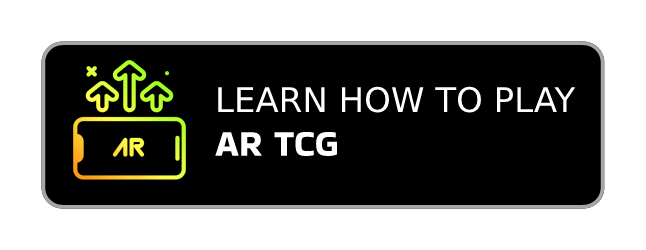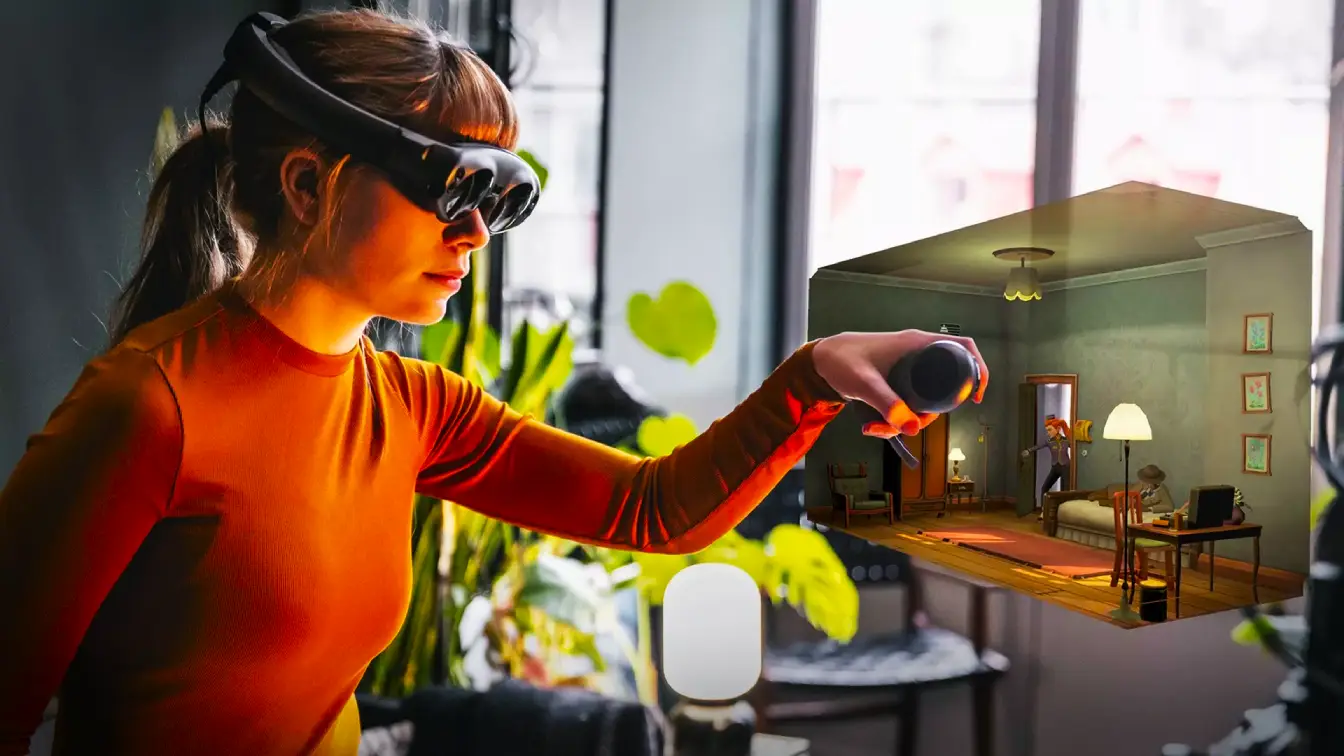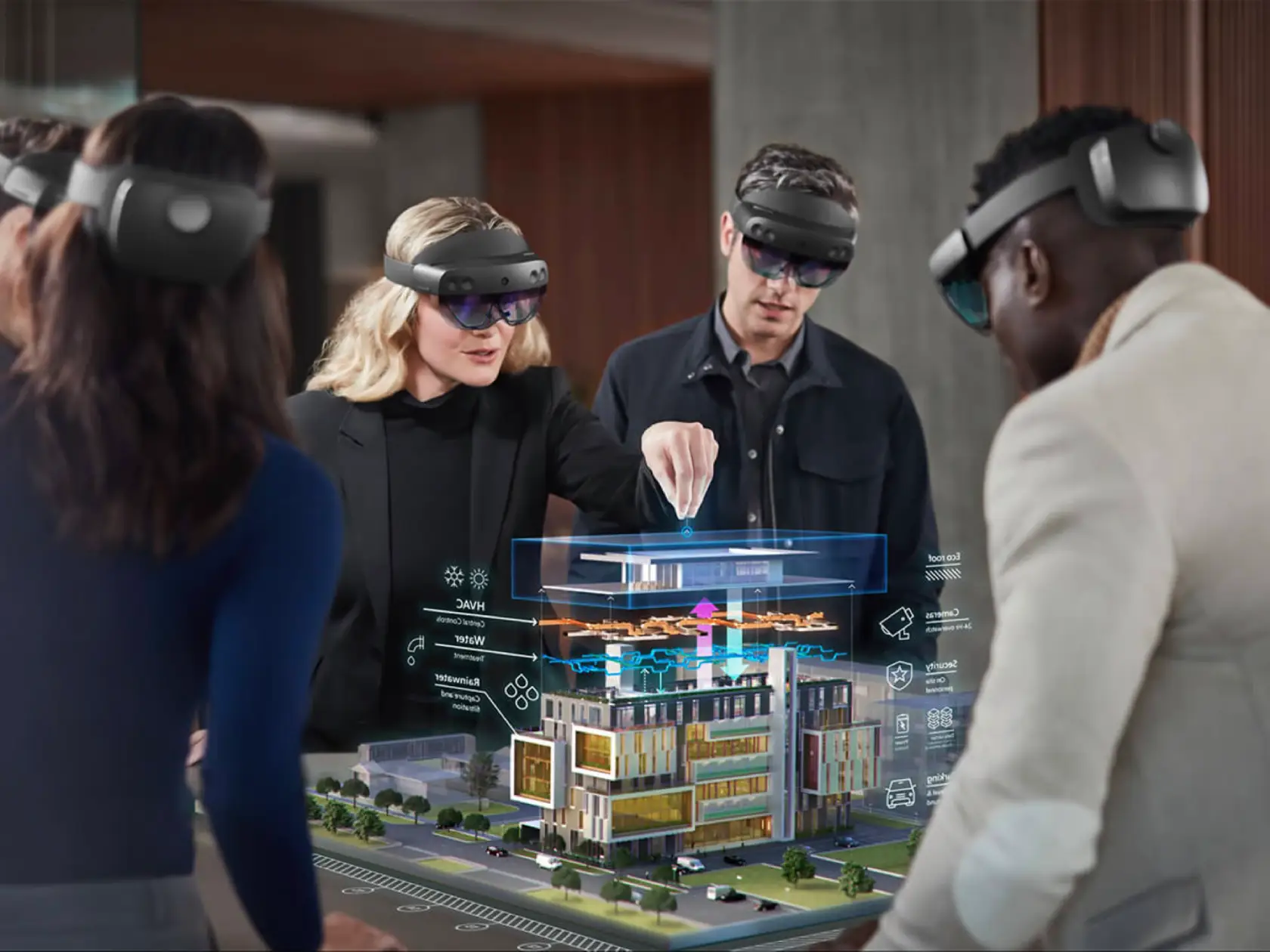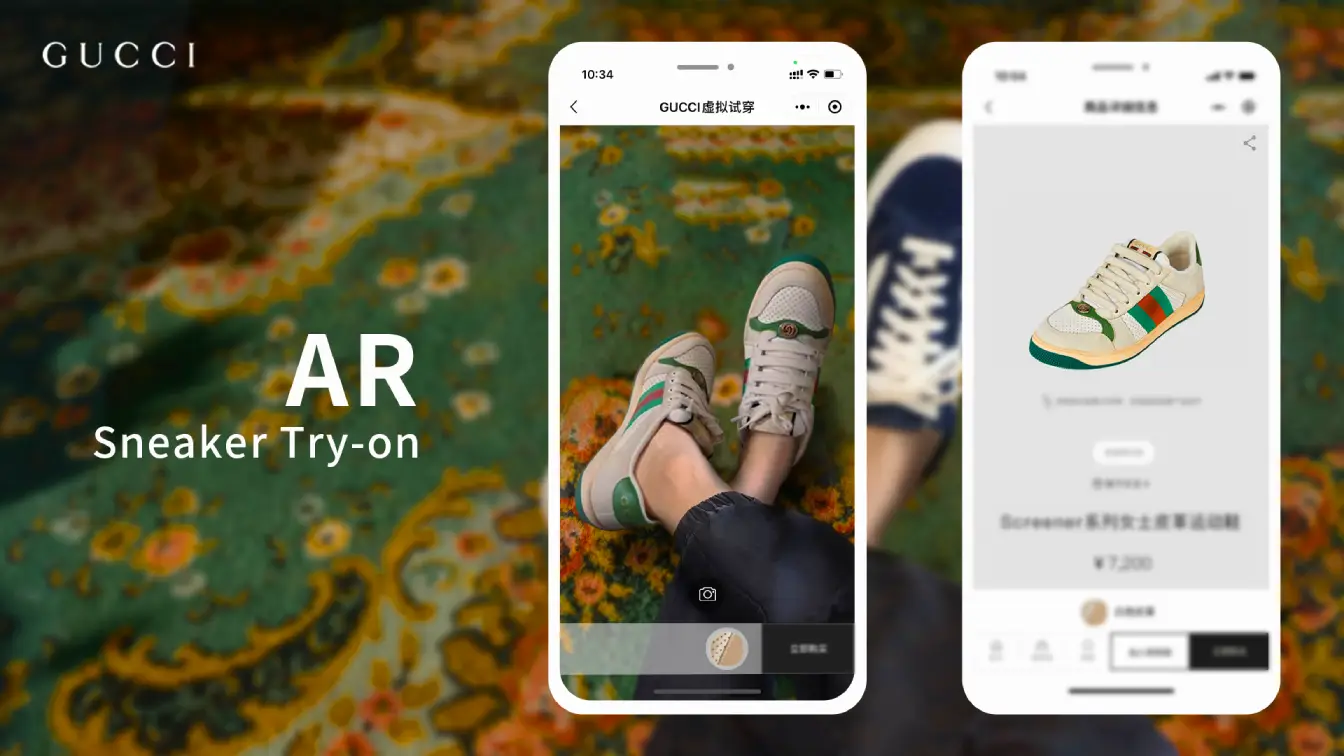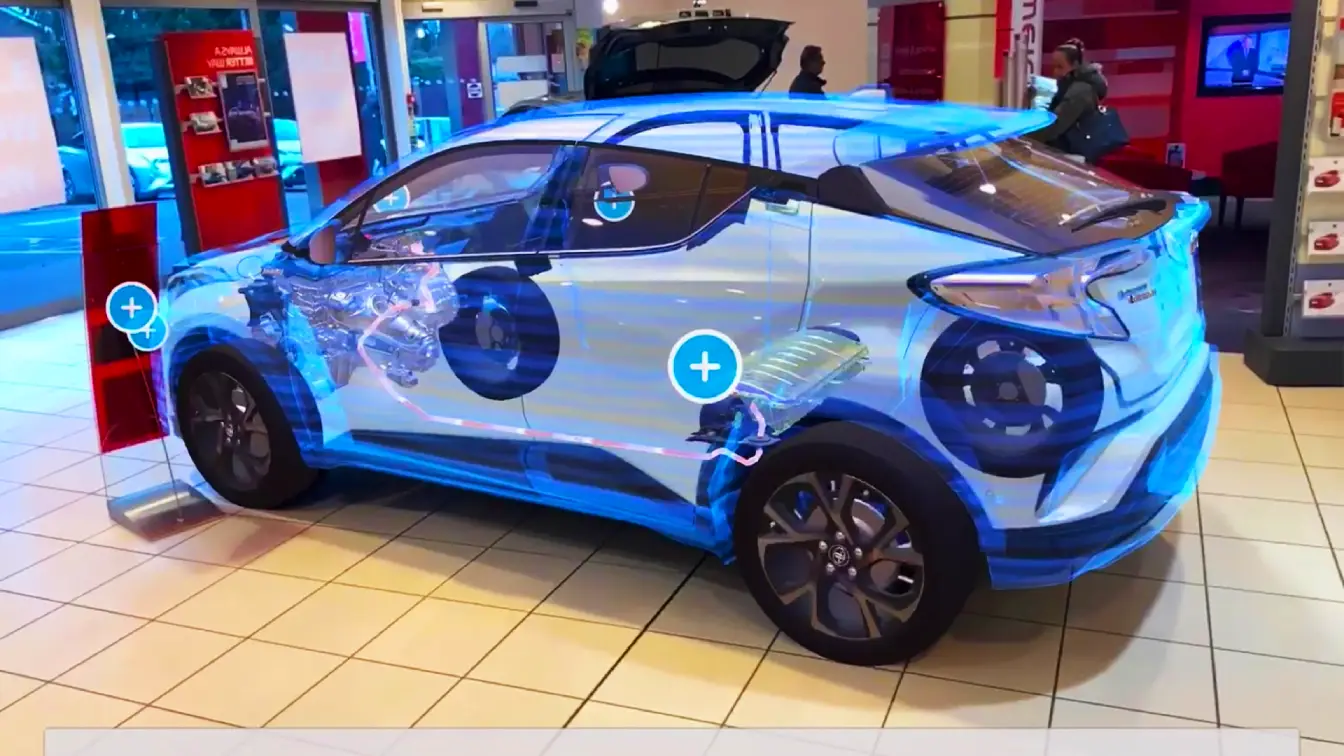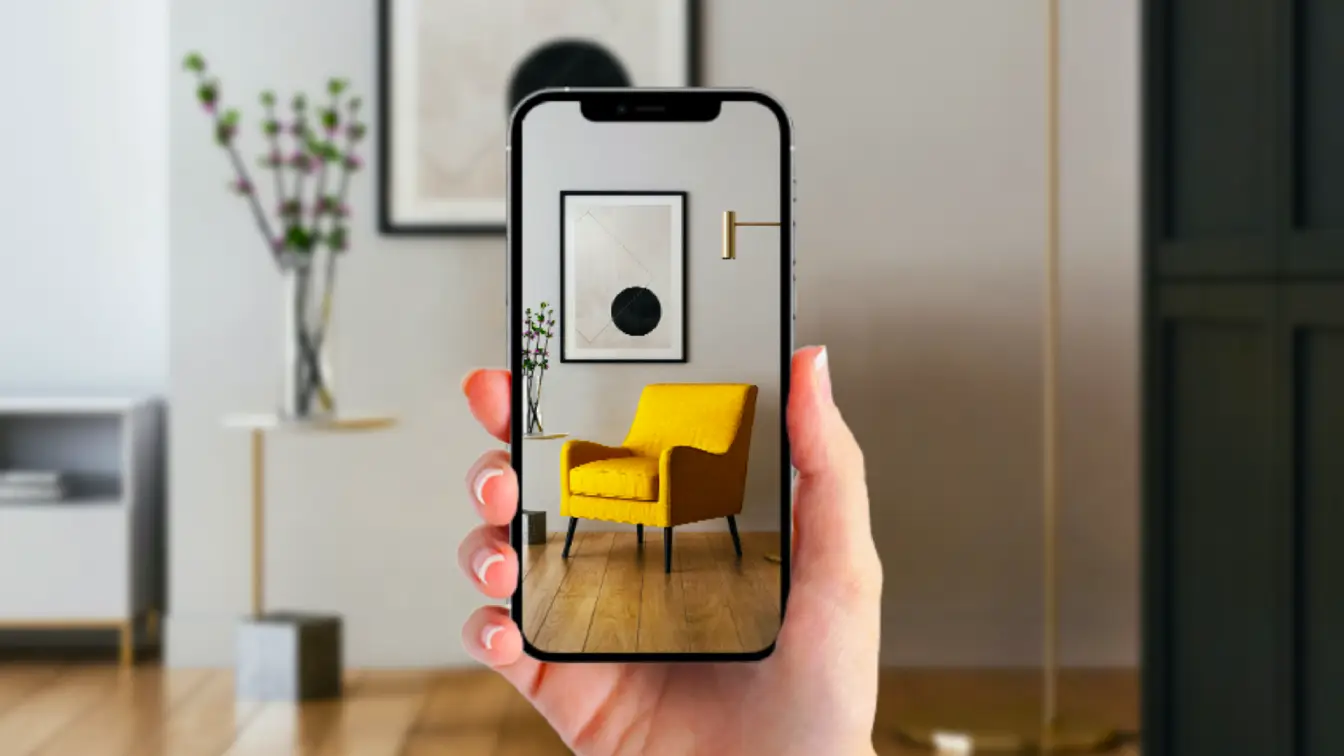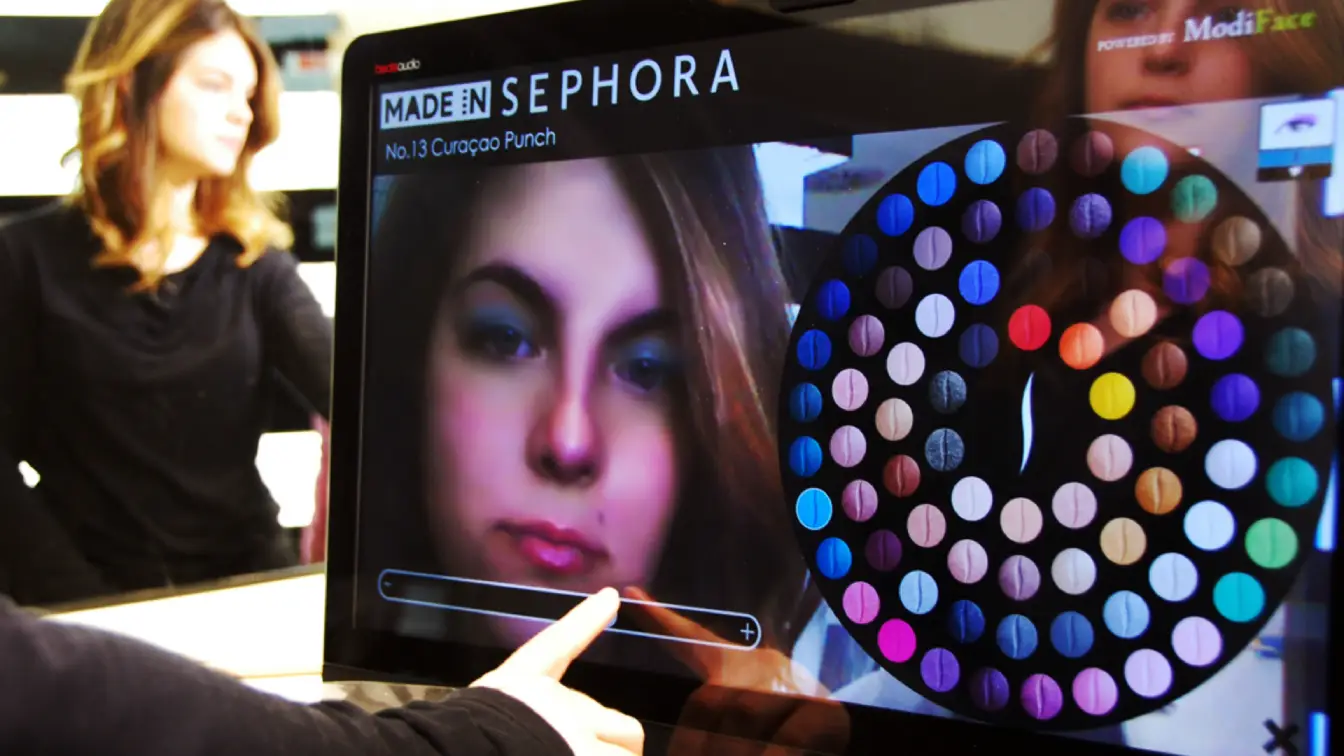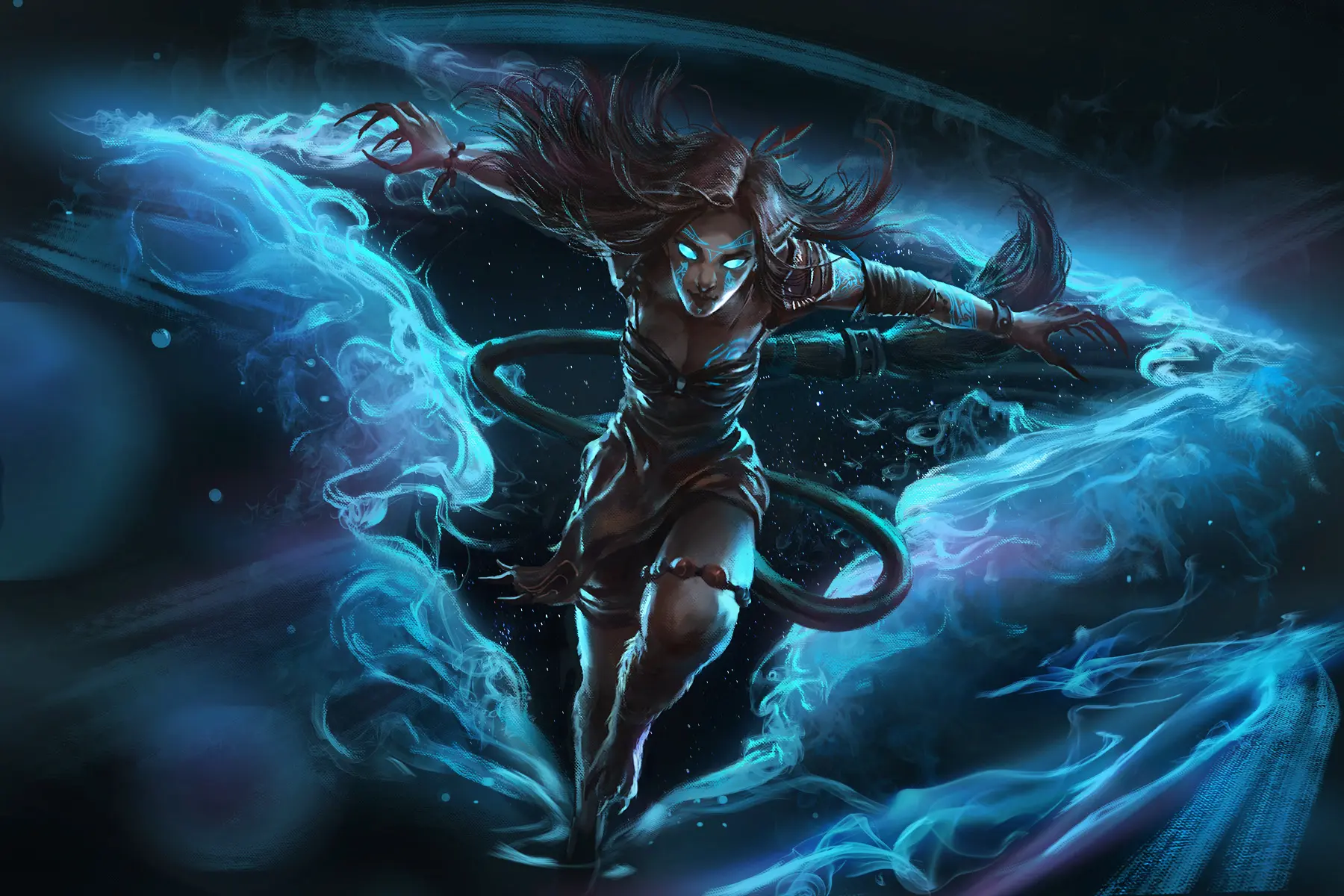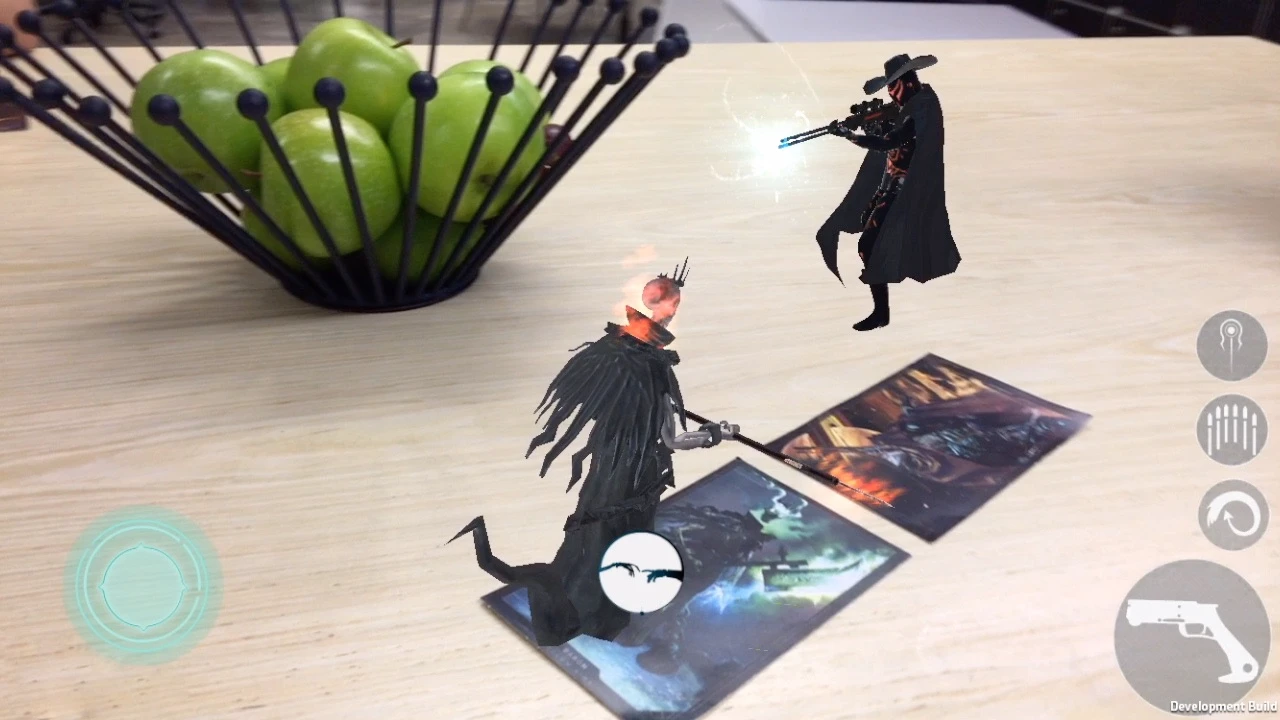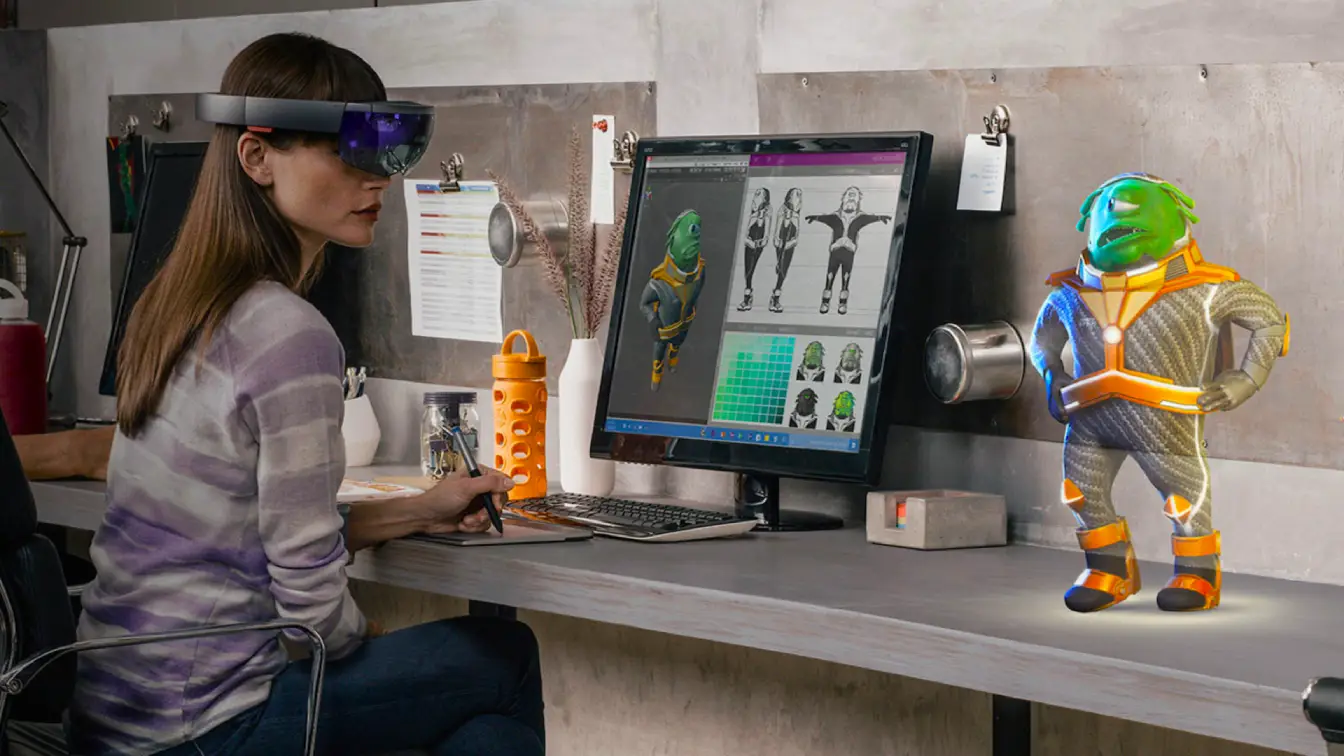-
Hotlinks - AR Apps mentioned in this post
-
- Apps showcasing the benefits of Augmented Reality
Benefits of augmented reality
Augmented reality is the process of adding digital elements to the physical world. It could be as simple as using a QR code to display additional information, or as complex as overlaying 3D objects onto live footage. Augmented reality was developed around the 1960's in a laboratory setting. One of the earliest examples being a head mounted display called "The Sword of Damocles" developed by Ivan Sutherland. Another, which popularised the genre, was called ARQuake - which was a augmented reality version of the popular Quake video game.
It wasn't until 2009, with the advent of the iPhone 3GS, that AR began to gain traction with the general public. As more powerful and portable computing devices, improved sensors and larger batteries were developed, the vast benefits of portable augmented reality became very obvious. In this post, we'll take a look at what augmented reality is, some of the ways you can use it and why it's changing the world.
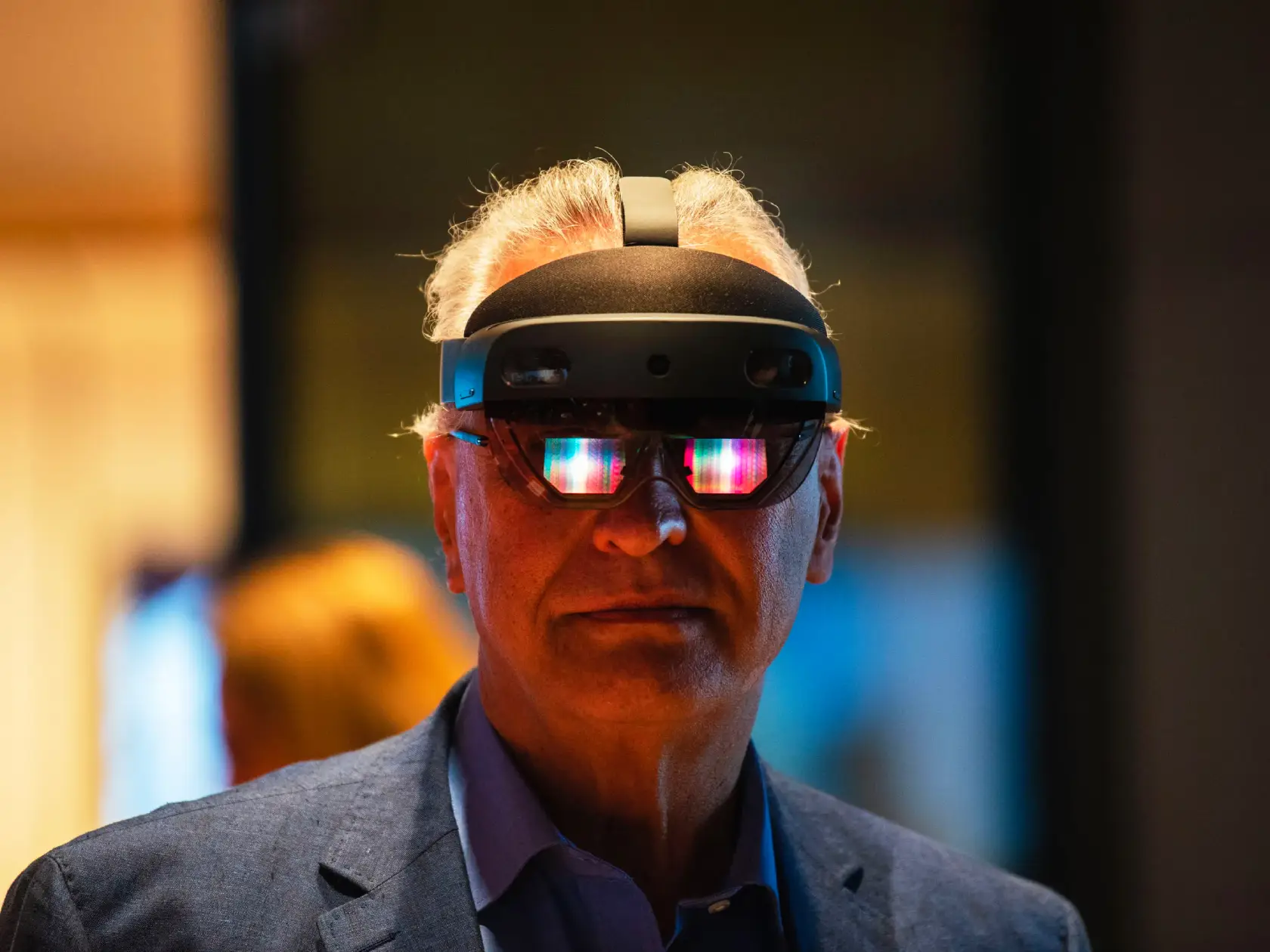
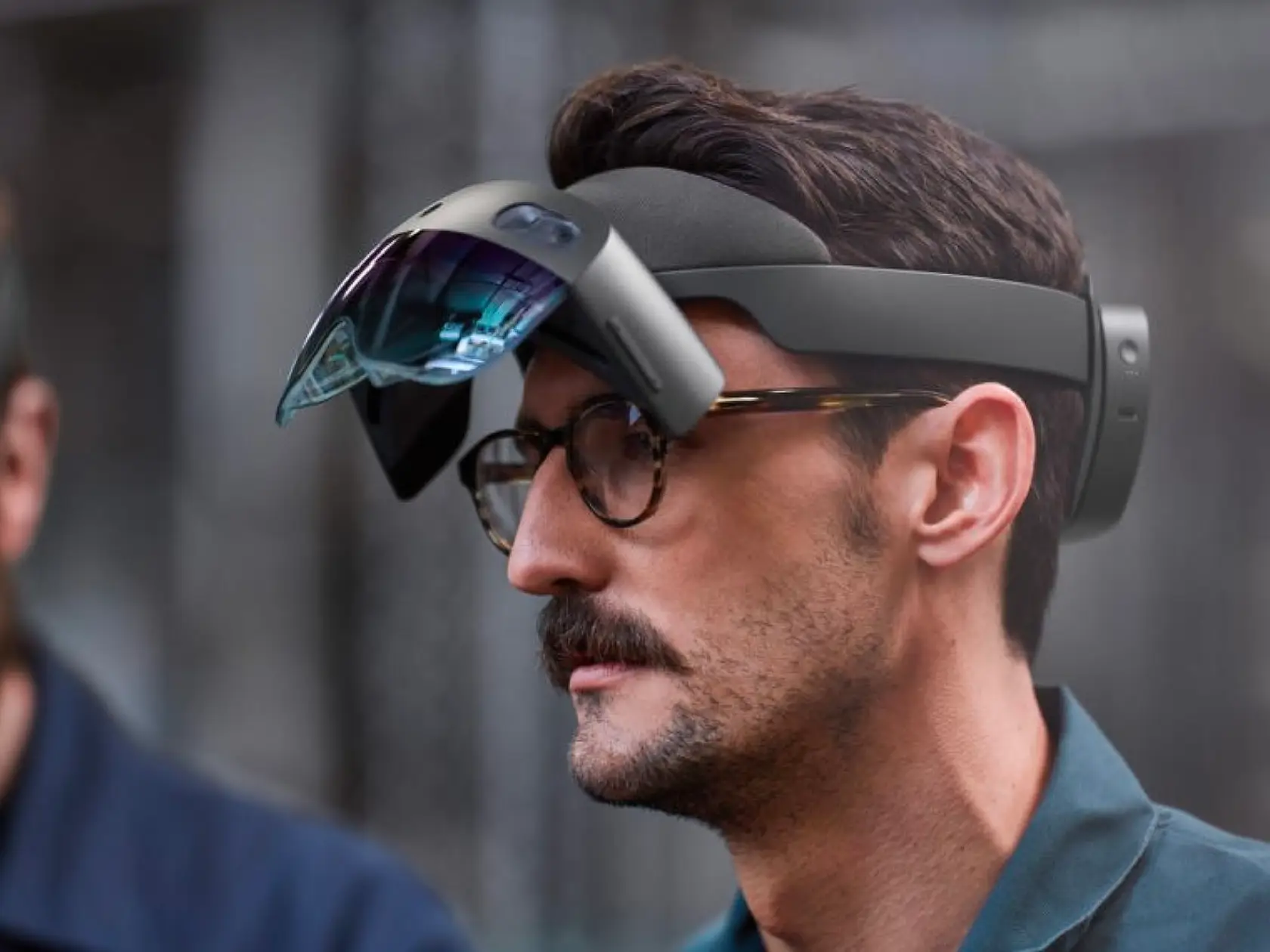
What is augmented reality?
Augmented reality (AR) is a technology that superimposes computer-generated images on top of real-world scenery, providing an enhanced view of the world around us. While some AR apps are purely for entertainment or gaming purposes, others have more practical uses.
For example, AR can be used to provide information about objects in our field of view - such as the name or price of products in a shop. It can also be used to overlay instructions or labels onto physical objects, making it easier to assemble furniture, fix electronic equipment or diagnose engines (cars, trucks, planes, etc).
With the rapid growth of AR technology, it is likely that we will increasingly rely on AR to provide us with information and assistance in our everyday lives.
Augmented Reality vs. Virtual Reality
Virtual reality (VR) and augmented reality (AR) are two of the hottest topics in the tech world right now. Both promise to change the way we interact with technology, but they work in very different ways. VR completely immerses users in a digital world, while AR combines digital elements with the real world. Here's a closer look at how these two technologies compare:
Virtual reality creates a completely artificial environment that users can explore. This can be done by wearing a headset that blocks out the real world and replaces it with computer-generated imagery (CGI). The headset tracks the user's movements and changes the view accordingly, giving the illusion of moving through a virtual space. Some popular use-cases of VR technology include video games, 360-degree videos, and certain simulations.
Augmented reality also uses CGI, but instead of creating a completely artificial environment, it overlays digital elements on top of the real world. This is often done using a smartphone, AR smart glasses or head-mounted display, which shows a camera feed of the outside world on the screen and adds digital objects on top of it. AR can be used for purposes such as navigation, gaming, and product visualization. Some popular examples of AR include Pokemon Go, Snap chat filters, and Google Maps.
Benefits of augmented reality in marketing
Augmented reality (AR) is a technology that superimposes computer-generated images on the real world, giving users the illusion of interacting with virtual objects. AR is already being used in gaming and entertainment, but the potential for augmented reality marketing is only just starting to be explored. Brands are now using AR to give consumers an immersive, interactive experience that surpasses traditional advertising.
AR can be used to place virtual products in real-world settings, allowing customers to easily visualise a product before they purchase. For example, trying on clothes and shoes without putting them on (essential for online shopping), visualising how makeup will look or seeing how a sofa will fit in your living room. This technology improves emotional investment by helping customers “try before they buy”. AR can also be used to create memorable and interactive experiences at events or pop-ups, wowing customers and immersing them into a brand. These experiences are impressive when done right and gives customers a reason to keep coming back. With its ability to blur the lines between the digital and physical worlds, AR has immense potential for marketers looking to engage with their customers in new and innovative ways.
5 Augmented Reality Statistics You Need to Know
Augmented reality (AR) is one of the hottest trends in technology today, and it's only going to become more popular in the years to come. Here are five statistics that show just how big AR is becoming:
- The global augmented reality market is expected to reach $72.7 billion by 2024, up from $2.4 billion in 2018 (Statista).
- The number of AR users is expected to grow from 1.21 billion in 2019 to 1.48 billion by 2023 (Statista).
- 52% of consumers say they would like to try AR before making a purchase ( Adobe ).
- 80% of consumers believe that AR will become a regular part of their lives in the next five years (PwC).
- 71% of people say they would be more likely to buy from a company that offers an AR experience ( Sales force ).
These statistics show that augmented reality is no longer a niche technology - it's quickly becoming mainstream. Businesses that don't start using AR risk being left behind by their competitors.
7 Ways Augmented Reality Can Grow Your Ecommerce Sales
Augmented reality has the potential to take your ecommerce business to the next level. Here are seven ways that it can help you grow sales and improve your customer experience.
Encourage Purchases
Augmented Reality (AR) has been growing in popularity in recent years, thanks in part to the release of Pokemon GO. This mobile game uses GPS to place virtual creatures in the real world, encouraging players to explore their surroundings and interact with businesses in order to catch them all.
While Pokemon GO is just a game, it demonstrates how AR can be used to encourage purchases. For businesses, AR provides a new way to engage customers and promote their products. By using AR, businesses can give customers a preview of what they are selling, or provide exclusive deals and discounts that can be redeemed by scanning a QR code.
In addition, businesses can use AR to create an immersive customer experience that will encourage them to come back for more. With so many potential applications, it is no wonder that AR is being embraced by businesses all around the world.
Reduce Returns
It's no secret that returns are a huge pain point for retailers. In fact, returns cost the retail industry billions of dollars each year. But what if there was a way to reduce the number of returns? That's where augmented reality comes in.
By allowing customers to try on products virtually, augmented reality can help to reduce the number of items that need to be returned. And that's not all; augmented reality can also help customers to make more informed purchase decisions, leading to fewer remorse fueled returns.
In other words, augmented reality has the potential to transform the returns process - and that's good news for everyone involved.
Provide Branded Experiences
Augmented reality (AR) is quickly becoming one of the most popular tools for providing branded and immersive experiences. By layering digital content on top of the real world, AR allows brands to create unforgettable experiences that are interactive and engaging.
The most famous example of AR branding is Pokémon Go, however, AR isn't just for gaming! it can also be used for educational and promotional purposes. For example, Coca-Cola used AR to allow customers to see virtual Coke bottles floating in the air around them. And L’Oreal created an AR app that allowed users to virtually try on different shades of lipstick.
As these examples illustrate, AR provides a powerful way for brands to connect with their customers and create memorable experiences.
Test New Products
Augmented reality (AR) is a technology that allows users to interact with computer-generated images in the real world.
AR has many potential applications, including product testing.
AR can also be used to create marketing materials, such as virtual showrooms or demonstrations. By using AR, companies can give potential customers a realistic preview of a new product, which can help increase interest and sales.
Generate Excitement
For example, AR can be used to make training inductions fun - medical students can practice surgeries on virtual patients, for instance. Transforming the learning experience into a game. It can also be used for educational purposes - history students can explore ancient ruins without ever leaving the classroom. A substantially more memorable and entertaining experience than reading the information from a text book. Studies have shown that fun is the best way to learn.
The possibilities for AR are nearly endless - and as the technology continues to develop, we can only imagine what new and exciting applications will be created.
Create Competitive Differentiation
AR also has the potential to create competitive differentiation for businesses. For example, AR can be used to provide customers with an enhanced and gamified shopping experience - providing a brand with a unique and memorable edge.
Retailers can use AR to allow customers to virtually try on clothes or test out products before making a purchase. AR can also be used for marketing, allowing businesses to create interactive displays that engage consumers and promote their brand. In the future, AR is likely to become an essential tool for businesses across a range of industries. Those who embrace this technology early on will have a competitive advantage over those who do not. Customers remember the impact of an AR experience - as it is something they have never experienced before.
Reach All Learners
Augmented Reality (AR) has the potential to revolutionize education by providing a more immersive and interactive learning experience. This technology has already been used in a variety of settings, from aerospace engineering to medical training.
There is evidence that the technology is effective for use in education. For example, one study found that students who used AR to learn about human anatomy retained more information than those who learned using traditional methods. Furthermore, AR can be used to cater to different learning styles.
Visual learners can benefit from seeing simulations of complex concepts, while kinesthetic learners can interact with virtual objects to gain a deeper understanding of how they work. By leveraging the power of AR, educators can reach all learners and provide them with a more engaging and effective learning experience.
5 Great Augmented Reality Examples
Gucci “Try-On” App
In 2016, high-end fashion brand Gucci became one of the first companies to offer an augmented reality “try-on” experience for its customers. The app, which is available on both iOS and Android, allows users to see how a product looks on them without having to physically try it on.
To use the app, customers simply point their phone’s camera at a mirror and select the product they want to “try on.” The app then superimposes the product onto their reflection, allowing them to see how it looks. Customers can also take a photo or video of themselves wearing the product to share with friends or family.
Toyota Vehicle Demo
In 2017, Toyota unveiled an augmented reality experience that allows users to see how its vehicles look and function in the real world. The experience, which is available on both iOS and Android, allows users to explore a vehicle’s features without having to physically test drive it.
To use the app, customers simply point their phone’s camera at a Toyota vehicle. The app then superimposes digital information onto the vehicle, such as the car’s name, price, and fuel economy. Customers can also learn about the car’s features, such as its safety features or infotainment system.
ARtGlass
ARtGlass is an augmented reality app that allows users to experience art in a whole new way. The app, which is available on both iOS and Android, superimposes digital artwork onto the physical world. This allows users to see how the artwork would look in their home or office before they purchase it.
To use the app, customers simply point their phone’s camera at a blank wall. The app then displays a selection of artwork that can be superimposed onto the wall. Customers can browse the artwork and select the one they want to “try on.” Once they’ve found the perfect piece, they can purchase it directly from the app.
Downloads
WebsiteIkea Place
Ikea Place is an augmented reality app that allows users to see how Ikea furniture would look in their home.
Sephora Virtual Artist
Sephora's Virtual Artist is a great example of how retailers can use augmented reality to improve the customer experience. With Virtual Artist, shoppers can try on makeup without having to physically apply it.
This not only saves time, but it also allows shoppers to experiment with different looks without having to commit to a purchase. In addition, Virtual Artist provides users with real-time feedback about which products work best for their specific skin type.
As a result, shoppers can be confident that they're choosing the right products for their needs. Sephora's Virtual Artist is just one example of how augmented reality can be used to enhance the shopping experience. By providing customers with a convenient way to try on products and receive personalized recommendations, retailers can create a more engaged and satisfied customer base.
